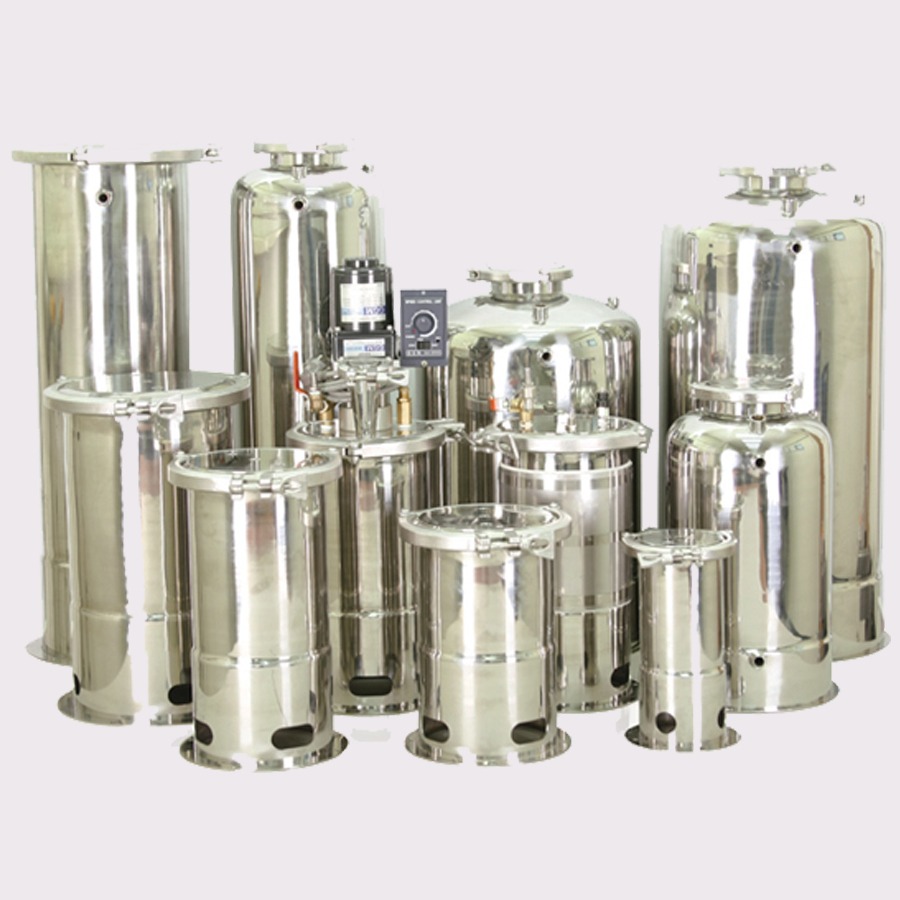Pressure tanks are essential components in industrial and commercial operations, enabling the efficient storage and controlled dispensing of fluids. Typically constructed from high-quality SUS304 stainless steel, these tanks offer versatility, durability, and a range of customizable features to meet various operational needs. In this article, we explore the features, advantages, and applications of pressure tanks, shedding light on their pivotal role across different industries.
What Are Pressure Tanks?
Pressure tanks are containers designed to store and manage fluids under pressure. These tanks are commonly used for bulk feeding materials to dispensing valves, ensuring a consistent and controlled flow. Their robust construction and variety of features make them suitable for handling materials with varying viscosities, from liquids to semi-solids.
Key options for pressure tanks include:
-
High/low-level sensors for material monitoring.
-
Stirrers for uniform mixing.
-
Heating elements for temperature regulation.
These features make pressure tanks a vital solution for precise material management and dispensing in diverse industries.
Key Features of Pressure Tanks
-
Material Excellence Made from SUS304 stainless steel, pressure tanks offer excellent resistance to corrosion, chemical damage, and wear. This ensures durability and reliability in demanding environments.
-
Range of Capacities Available in various sizes, from 1 liter to 50 liters, these tanks accommodate different fluid inventory needs, making material management efficient and scalable.
-
Customizable Design
-
Electro Polishing: Provides a smooth, clean surface to reduce contamination and enhance hygiene.
-
Teflon Coating: Adds non-stick properties, ideal for materials prone to adhesion.
-
-
Advanced Functionality
-
Stirrers: Maintain homogeneity in stored materials by ensuring even mixing.
-
Heating Options: Control material temperature for optimal performance.
-
-
Pressure Regulation Designed to handle materials under pressure, these tanks ensure safe and efficient dispensing through valves, minimizing wastage and ensuring precision.
Benefits of Pressure Tanks
-
Efficient Fluid Management Pressure tanks enable precise control over the storage and dispensing of fluids, ensuring consistency and reducing operational downtime.
-
Enhanced Durability The use of high-quality stainless steel ensures long-lasting performance, even under demanding conditions.
-
Improved Hygiene and Safety Features like electro-polished interiors and optional Teflon coatings enhance cleanliness and prevent contamination, meeting stringent hygiene standards.
-
Versatile Applications With the ability to handle a wide range of materials, pressure tanks are suitable for various industries, from food and beverages to chemicals and pharmaceuticals.
-
Customizability Pressure tanks can be tailored to specific operational requirements, offering flexibility and adaptability for unique industrial processes.
Applications of Pressure Tanks
Pressure tanks are indispensable across numerous industries, including:
-
Food and Beverage
-
Storage and dispensing of liquid ingredients such as syrups, oils, and sauces.
-
Ensuring consistency in semi-liquid food products.
-
-
Pharmaceuticals
-
Handling active pharmaceutical ingredients (APIs) and chemical compounds.
-
Facilitating precise dispensing during formulation processes.
-
-
Cosmetics
-
Storage and mixing of creams, lotions, and other personal care products.
-
Maintaining the integrity of temperature-sensitive ingredients.
-
-
Chemical Industry
-
Dispensing adhesives, sealants, and other industrial chemicals.
-
Managing high-viscosity materials with precision.
-
-
Manufacturing and Electronics
-
Feeding solder pastes and specialized materials to dispensing systems.
-
Ensuring uniform application in high-precision components.
-
Customization Options
Pressure tanks can be customized to meet specific industry requirements. Common modifications include:
-
Special Coatings: To handle unique materials or prevent adhesion.
-
Variable Stirrer Speeds: For precise mixing needs.
-
Temperature Control Systems: To maintain material integrity.
-
Custom Shapes and Sizes: To fit unique spatial or operational constraints.
Best Practices for Using Pressure Tanks
To maximize the performance and longevity of pressure tanks, follow these guidelines:
-
Material Compatibility Verify that the tank’s materials and coatings are suitable for the fluids being stored and dispensed.
-
Routine Maintenance Clean the tank thoroughly after each use to prevent residue buildup. Regularly inspect sensors, stirrers, and heating elements to ensure optimal functionality.
-
Follow Manufacturer Instructions Adhere to recommended pressure levels, mixing speeds, and temperature settings to maintain safety and efficiency.
-
Utilize Custom Features Leverage available customizations to tailor the tank’s capabilities to your specific operational requirements.
Conclusion
Pressure tanks are a cornerstone of efficient fluid management in various industrial and commercial applications. Their robust construction, versatile features, and customizable options make them a reliable solution for handling materials with precision and care. Whether in food production, pharmaceuticals, cosmetics, or manufacturing, pressure tanks provide the control and flexibility needed to optimize processes.
By understanding their features, benefits, and applications, and adhering to best practices, you can unlock the full potential of pressure tanks, ensuring smoother operations and greater productivity in your industry
